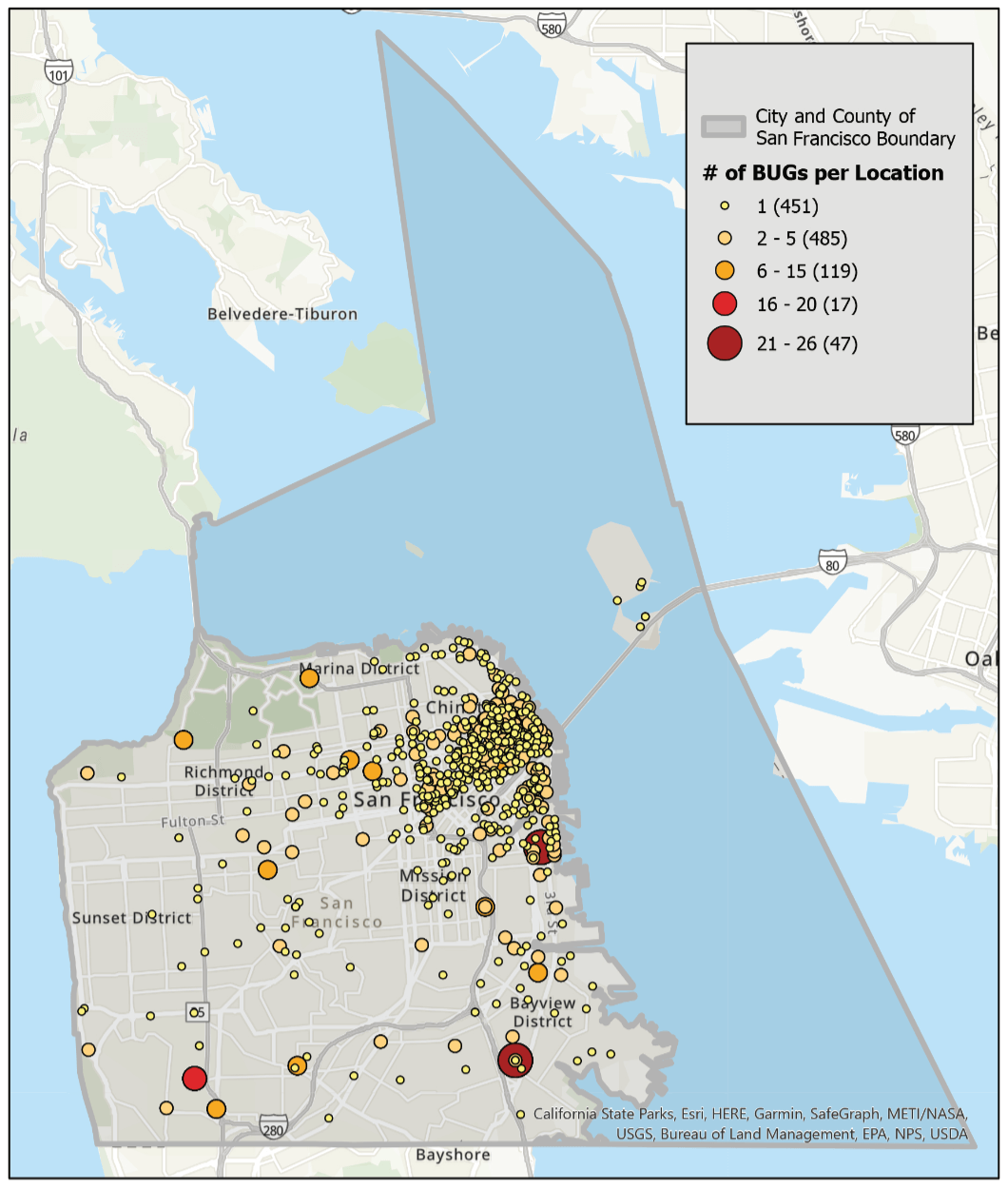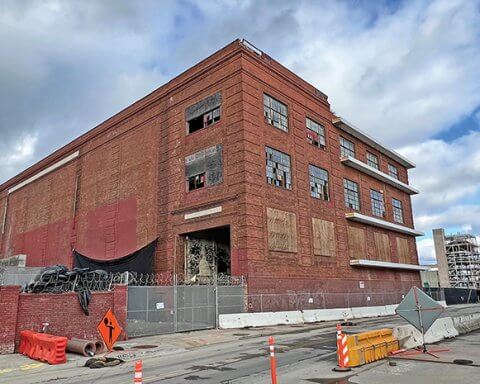The San Francisco Bay Area continues to host a steadily growing hive of dispersed diesel generators; those low buzzing big boxes located at internet server farms, hospitals, police stations, and, during festivals, Golden Gate Park. In 2019, roughly 6,500 backup generators, known as “BUGs,” were littered across the region, able to produce a collective 3.8 gigawatts (GW) of power. In 2021 – less than three years later – BUG deployment had reached 8,722 generators, 4.8 GW of power, a 34 percent jump in the backup generator fleet.
By the end of 2022 the Bay Area’s BUG population totaled 9,121, with a collective capacity of more than five GW. Ninety percent of these gensets are diesel powered.
San Francisco is a fertile nesting ground for BUGs. In 2019 there were some 800 in the City. Today there are 1,208, with a combined generating capacity of 736 megawatts, enough to power all of San Francisco’s homes and businesses on a mild spring day.
These numbers exclude the thousands of smaller gasoline, propane, and diesel-powered generators located in backyards and garages. All emit polluting air emissions, much of which may go undetected by air quality regulators.
The engines mostly sit idle, waiting to be called on during an electricity grid outage. But there’s so many of them, a slug of which – known as “prime generators” – are used more actively, that even their intermittent use can add up to notable emissions. In an era in which many California municipalities, including San Francisco, are striving for 100 percent renewable power, the generators are a sticky fly in the ointment.
Although BUGs provide an extra layer of reliability to their owners, a kind of dirty outage insurance, this benefit isn’t considered in multi-billion-dollar generation and transmission investment decisions. Instead, the state’s electricity grid operator, the inelegantly named California Independent System Operator, averts its eyes, and insists on having access to enough other assets to cover multiple potential system failures, excluding BUGs. It’s belt, suspender, button, and snap redundancies that contributes to ever-higher electricity rates. Last year alone Pacific Gas and Electric Company’s prices jumped by 13 percent.
If they’re triggered, by an earthquake- or storm-induced utility distribution failure, or as part of fire mitigation strategies, the resulting plumes of diesel pollutants are likely to be cold comfort to those left without power. Once they’re run dry, refueling the generators may not be easy amidst a chaotic catastrophe, making them a short-term reliability stopgap.
Distributed generation could provide financial, environmental, and equity benefits if BUGs were replaced with non-fossil-fueled resources, networked into the grid, or deployed as part of community microgrids. California’s fiscal year 2022 budget includes $950 million in incentives to deploy zero or low emission technologies, including fuel cells, at existing or new facilities, and as replacements or to substantially improve the environmental performance of already installed BUGs. The funds are available to support reliability at data centers, hospitals, clinics, water facilities and fire stations. BUG owners that receive state funding have to operate their equipment to support the grid during emergencies.
In addition, the federal Inflation Reduction Act (IRA) extended the renewable energy investment tax credit (ITC) for 10 years, increased the base credit from 26 percent to 30 percent and made standalone energy storage ITC eligible. Previously, energy storage only qualified if the batteries were connected to a solar project. The ITC provides a financially viable pathway to deploy storage to replace fossil fueled BUGs. A 10 percent credit bonus can be claimed by facilities located in “energy communities” that have been historically subjected to particularly high pollution burdens, which could include Hunters Point.
[Image, top] Backup generator population in San Francisco grows to 1,208, mostly diesel. 84 additional BUGs are located at the San Francisco International Airport and other unincorporated areas adjacent to city boundaries. Five BUGs were not mapped due to incomplete data. SOURCE: Bay Area Air Quality Management District; M.Cubed, 2022




